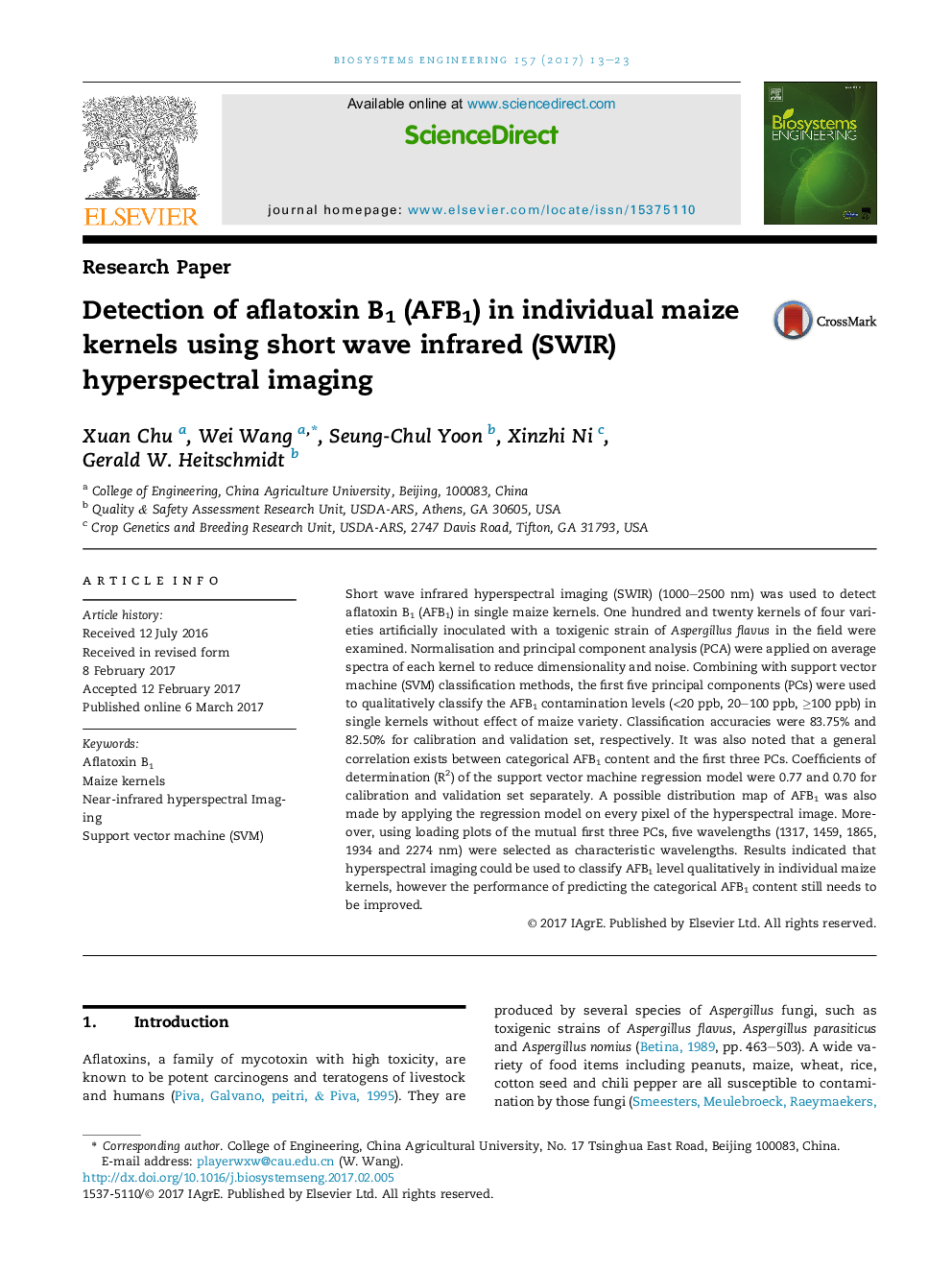| Article ID | Journal | Published Year | Pages | File Type |
|---|---|---|---|---|
| 5471881 | Biosystems Engineering | 2017 | 11 Pages |
Abstract
Short wave infrared hyperspectral imaging (SWIR) (1000-2500 nm) was used to detect aflatoxin B1 (AFB1) in single maize kernels. One hundred and twenty kernels of four varieties artificially inoculated with a toxigenic strain of Aspergillus flavus in the field were examined. Normalisation and principal component analysis (PCA) were applied on average spectra of each kernel to reduce dimensionality and noise. Combining with support vector machine (SVM) classification methods, the first five principal components (PCs) were used to qualitatively classify the AFB1 contamination levels (<20 ppb, 20-100 ppb, â¥100 ppb) in single kernels without effect of maize variety. Classification accuracies were 83.75% and 82.50% for calibration and validation set, respectively. It was also noted that a general correlation exists between categorical AFB1 content and the first three PCs. Coefficients of determination (R2) of the support vector machine regression model were 0.77 and 0.70 for calibration and validation set separately. A possible distribution map of AFB1 was also made by applying the regression model on every pixel of the hyperspectral image. Moreover, using loading plots of the mutual first three PCs, five wavelengths (1317, 1459, 1865, 1934 and 2274 nm) were selected as characteristic wavelengths. Results indicated that hyperspectral imaging could be used to classify AFB1 level qualitatively in individual maize kernels, however the performance of predicting the categorical AFB1 content still needs to be improved.
Related Topics
Physical Sciences and Engineering
Engineering
Control and Systems Engineering
Authors
Xuan Chu, Wei Wang, Seung-Chul Yoon, Xinzhi Ni, Gerald W. Heitschmidt,
